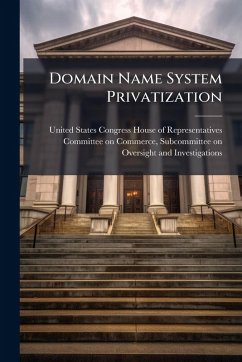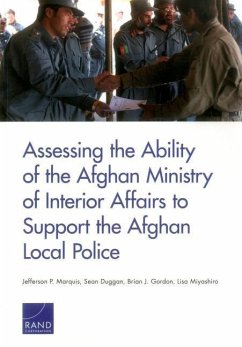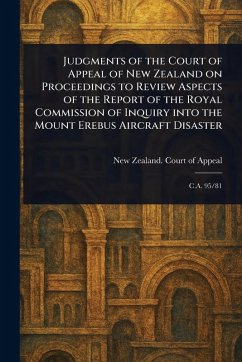
Domestic Remotely Piloted Aircraft use by Federal, State, and Local Governments
Versandkostenfrei!
Versandfertig in über 4 Wochen
16,99 €
inkl. MwSt.
Weitere Ausgaben:

PAYBACK Punkte
8 °P sammeln!
The United States military enjoys the continued growth of Remotely Piloted Aircraft assets and personnel. By 2015, Creech Air Force Base will employ almost one in every five active duty Air Force pilots. Remotely Piloted Aircraft are in such demand in Iraq and Afghanistan that they occupy over forty 24-hour continuous missions, planned to expand to over sixty within the next two years. However, with the drawdown in troops in both Iraq and Afghanistan inevitably approaching, the United States military will have a surplus of assets and operators undergoing training in the United States while wai...
The United States military enjoys the continued growth of Remotely Piloted Aircraft assets and personnel. By 2015, Creech Air Force Base will employ almost one in every five active duty Air Force pilots. Remotely Piloted Aircraft are in such demand in Iraq and Afghanistan that they occupy over forty 24-hour continuous missions, planned to expand to over sixty within the next two years. However, with the drawdown in troops in both Iraq and Afghanistan inevitably approaching, the United States military will have a surplus of assets and operators undergoing training in the United States while waiting for the next crisis. The military remains committed to its Defense Support to Civil Authorities requirements but needlessly restricts its support beyond emergency response due to the outdated United States Code and self-inflicted Department of Defense Directives. Unless the United States government, specifically the military, develops a system to allow Federal and State agencies to request habitual assistance from the military's Remotely Piloted Aircraft, those agencies will purchase separate equipment and operators. While military assets go operationally underused, the State and Federal agencies will not be able to fully exploit their expensive equipment and costly operators. However, if the Federal government implements an approach to maximize Remotely Piloted Aircraft efficiency and effectiveness, such as a system similar to the military's Close Air Support request system or an improved National Incident Management System, it would lower overall government costs through the sharing of equipment, bandwidth, and operators. This work has been selected by scholars as being culturally important, and is part of the knowledge base of civilization as we know it. This work was reproduced from the original artifact, and remains as true to the original work as possible. Therefore, you will see the original copyright references, library stamps (as most of these works have been housed in our most important libraries around the world), and other notations in the work. This work is in the public domain in the United States of America, and possibly other nations. Within the United States, you may freely copy and distribute this work, as no entity (individual or corporate) has a copyright on the body of the work. As a reproduction of a historical artifact, this work may contain missing or blurred pages, poor pictures, errant marks, etc. Scholars believe, and we concur, that this work is important enough to be preserved, reproduced, and made generally available to the public. We appreciate your support of the preservation process, and thank you for being an important part of keeping this knowledge alive and relevant.












![A Summary of the Laws of Commerce and Navigation, Adapted to the Present State, Government, and Trade of the Island of Newfoundland [microform] Cover A Summary of the Laws of Commerce and Navigation, Adapted to the Present State, Government, and Trade of the Island of Newfoundland [microform]](https://bilder.buecher.de/produkte/66/66144/66144386n.jpg)